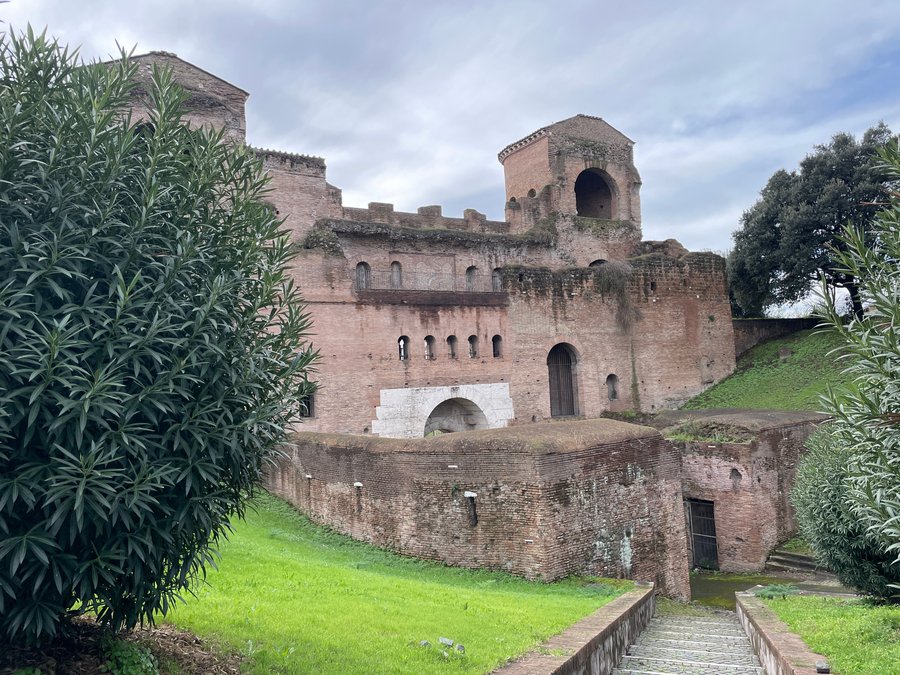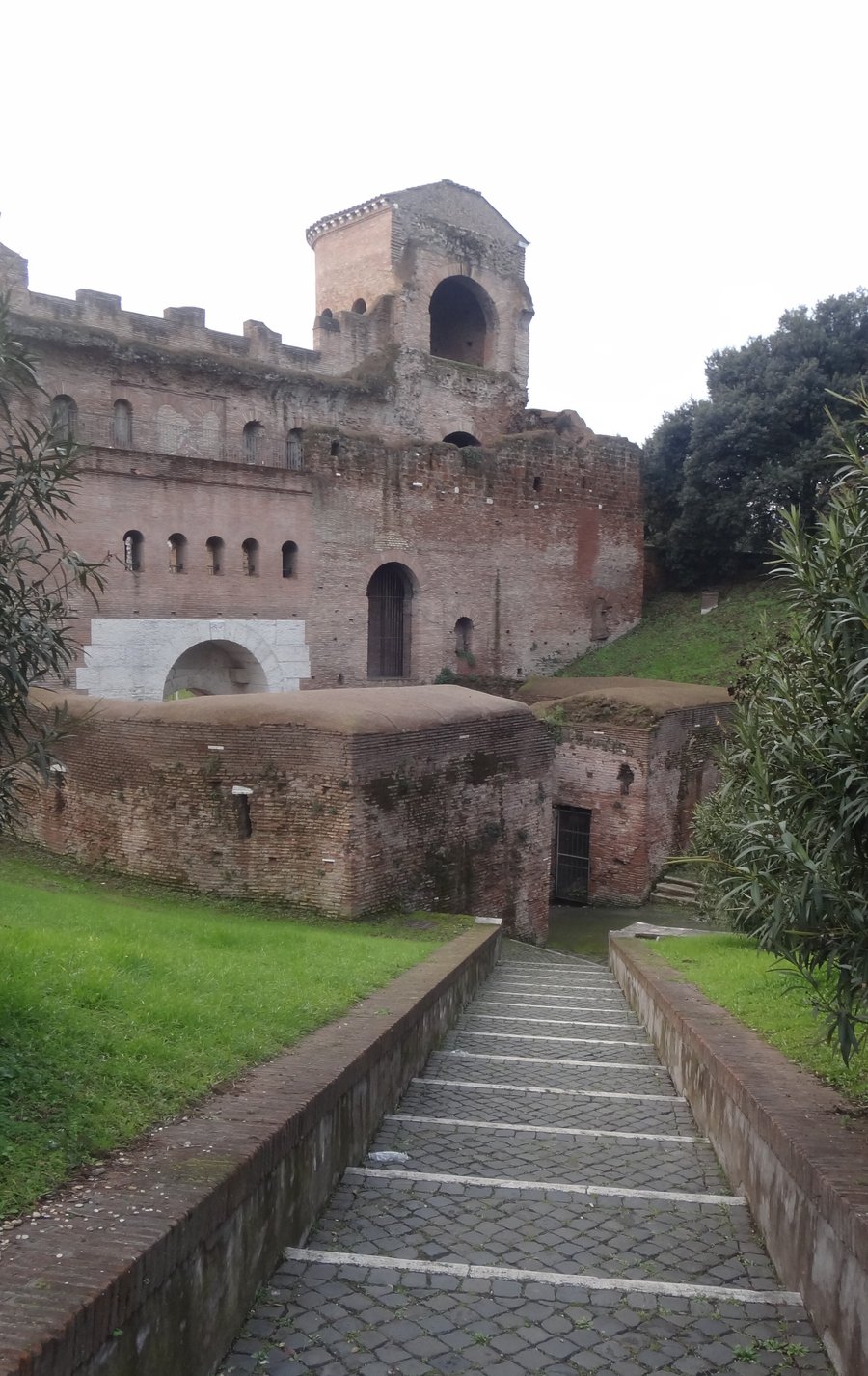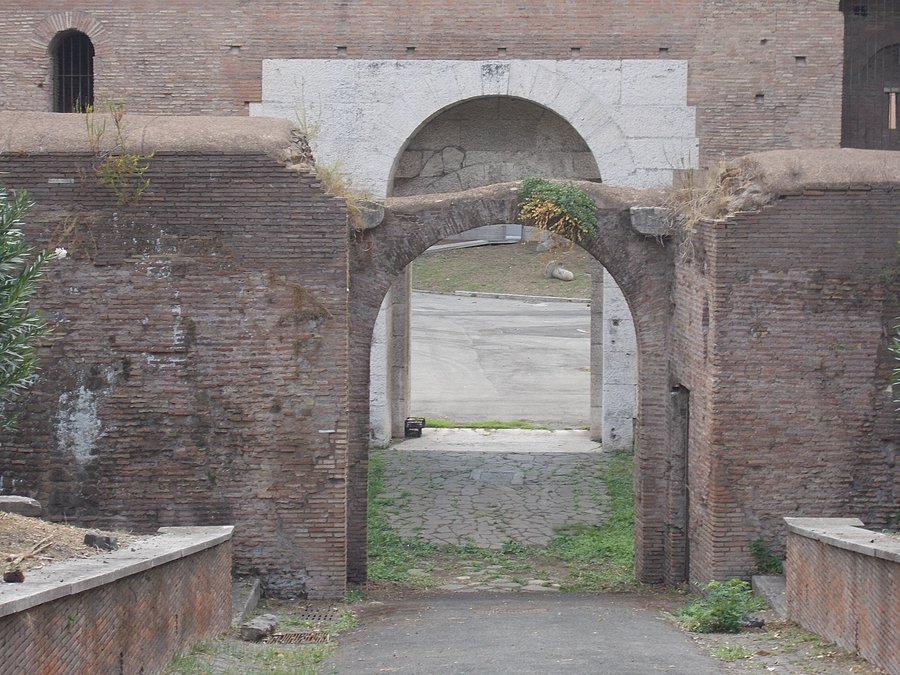Nestled within the imposing Aurelian Walls of Rome, the Porta Asinaria is a living testament to the city’s storied past. Built between 271 and 275 CE under Emperor Aurelian, this monumental gate was part of a fortification system designed to protect Rome during an era of increasing external threats. Centuries later, it would become a pivotal site in a historic moment of Byzantine resurgence, bridging the Roman Empire’s past and its Eastern revival.
The Historical Context: A Gate Built for Survival
The Aurelian Walls, spanning nearly 19 kilometers, were constructed during a period of crisis in the late Roman Empire. With external invasions threatening Rome’s sovereignty, the walls were a response to the growing need for defense. The Porta Asinaria, a secondary but strategically vital gate along the Via Appia, exemplifies the era’s emphasis on combining practicality with formidable design.

Initially serving as a modest entry point, its importance grew as it became a key part of Rome’s defensive strategy, showcasing the adaptability of Roman military architecture.
The Triumph of Belisarius in 536 CE
In 536 CE, the Porta Asinaria was the stage for one of Rome’s most remarkable events. During the Gothic War, the brilliant Byzantine general Belisarius led East Roman forces to reclaim Rome from the Ostrogoths. Entering through this gate, Belisarius secured a relatively bloodless victory, restoring the city to the Byzantine Empire under Emperor Justinian I’s grand vision of reuniting the Roman world.

This moment was not just a military victory but also a symbolic act. The recapture of Rome represented the Byzantine Empire’s determination to revive its Western heritage. Porta Asinaria, as the entry point for Belisarius and his troops, became a symbol of this short-lived but profound triumph.
Architectural Brilliance of Porta Asinaria
The Porta Asinaria showcases the ingenuity of late Roman engineering. Its massive brick façade, flanked by two robust semicircular towers, reflects a design aimed at withstanding sieges. While it was constructed as a secondary gate, its reinforcements over time underscore its growing significance.

What sets Porta Asinaria apart from other gates in the Aurelian Walls is its well-preserved structure, retaining much of its original 3rd-century design. Unlike heavily modified gates like the Porta Maggiore, this gate offers a rare and authentic look into the military architecture of the late Roman Empire.
From Strategic Stronghold to Forgotten Landmark
After its moment of glory in 536 CE, the Porta Asinaria continued to serve as a critical access point to Rome during the Middle Ages. However, its prominence waned with the construction of the nearby Porta San Giovanni in the 16th century, which took over its role in facilitating entry into the city.

Today, Porta Asinaria is overshadowed by more iconic landmarks, but its historical and architectural value remains profound. It is not merely a relic of Rome’s past but a silent witness to the city’s resilience through centuries of turmoil and transformation.
A Legacy of Adaptation and Endurance
The Porta Asinaria encapsulates the spirit of Rome—its ability to adapt, endure, and reinvent itself. It stands as a bridge between different epochs: the decline of the Western Roman Empire, the Byzantine Empire’s resurgence, and the medieval era. Each stone in its structure tells a story of survival, ingenuity, and triumph.

In a city famed for its monumental ruins, Porta Asinaria reminds us that even the seemingly lesser-known sites hold profound significance. As both a functional piece of military architecture and a historical landmark, it continues to inspire awe and curiosity among those who delve into its past.

